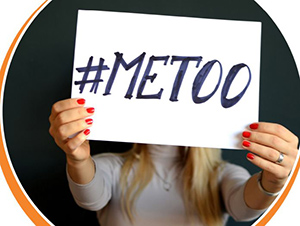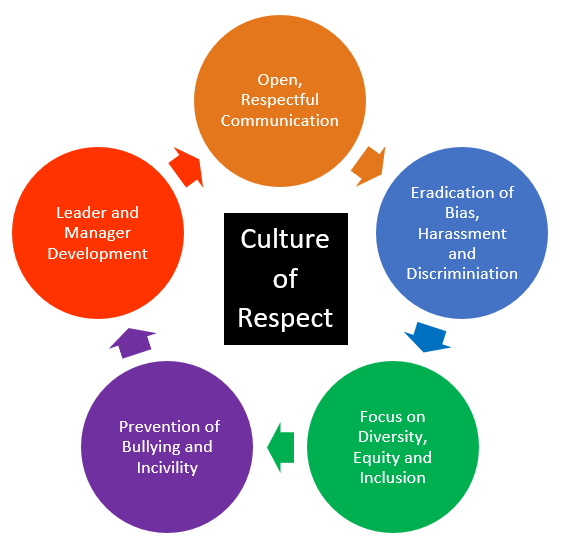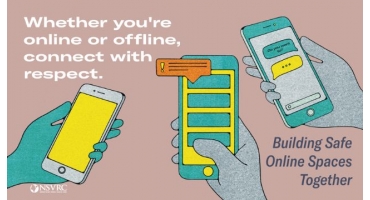Looking Ahead: The Future of Sexual Harassment Prevention Training

Extensive media coverage, lawsuits, accusations of inappropriate behavior against high-profile individuals, and the emergence of the ‘me too.’ Movement have helped elevate the visibility of sexual harassment in the workplace. Greater public attention, along with more vocal calls for accountability are positive steps in the right direction.
However, despite the heightened focus on the topic, only about half (51%) of companies added new harassment policies in the wake of #MeToo, and many organizations still fail to address the issue of sexual harassment in the workplace. Consider these figures:
| • | As many as 81% of women say they’ve experienced sexual harassment at work |
| • | Up to 72% of workplace sexual harassment victims don’t report incidents |
| • | 74% of adults say they believe their employer takes workplace sexual harassment seriously |
| • | But only 30% of women say their employer handles harassment incidents properly |


Why does workplace sexual harassment remain such a pervasive problem? In its State of Workplace Harassment study, electronic reporting service AllVoices had this to say:
Harassment will thrive if ignored, and will deplete morale, create unsafe working conditions, and will lead to employees leaving, lawsuits, or egregious media attention. This is why workplaces must take an active approach to harassment, by not just normalizing the conversation around harassment, but by encouraging employees to report, and [by] putting initiatives in place to actively prevent harassment before it starts.
The study found that more than seven in 10 employees believe their organizations are taking measures to prevent workplace sexual harassment; however, one in four don’t think so. Further, researchers concluded that harassment continues to occur in about half of the firms that have prevention measures in place, calling into question the effectiveness of training and other interventions.
It is also appropriate to note that the EEOC first defined sexual harassment in 1980. Although more than 40 years have passed, workplace harassment has not been eradicated, and much work remains to be done.
A Better Future Begins with Laws
Legislation offers a key strategy to address workplace sexual harassment, and some states have followed in the trailblazing footsteps of California by passing laws to strengthen support for victims and to require sexual harassment prevention training in organizations. Other states are expected to follow.
Pulling the legislation lever is a much-needed tactic, and such actions further advance conversations about harassment and acknowledge lingering problems. Laws also establish a basis for accountability when sexual harassment occurs and provide an authoritative push for widespread prevention training.
But multiple sources affirm that compliance as the core driver of sexual harassment prevention training doesn’t produce effective results, and often worsens the problem. Consequently, it’s clear that laws are only part of the solution to achieving a future free of workplace sexual harassment.
Respectful Cultures Lay the Foundation
Achieving true effectiveness in eliminating sexual harassment in workplaces requires a seismic shift in corporate culture—in essence, a holistic approach that includes sexual harassment prevention, along with other critical elements, to create a workplace atmosphere where safety, inclusion, and regard for others are paramount.
In short, the foundation for a workplace free of sexual harassment, bullying, microaggressions, and other negative behaviors is an unshakable culture of respect.
HR and L&D functions are ideally qualified and positioned to be the change agents that create and nurture positive, productive cultures. That kind of transformation doesn’t happen overnight. Rather, it is part of an organization’s evolution, and progress begins with a focus on continuous training. That includes sexual harassment prevention training, of course. But establishing and growing a culture of respect calls for broader educational initiatives—comprehensive training in such topics as:


- Diversity, equity, inclusion and belonging
- Overcoming bias, harassment, and hostile work environments
- Resolving conflict, and preventing workplace violence
- Leadership and management skills that build and sustain positive culture change
- Communication skills, accountability, and other behaviors that characterize safe, respectful workplaces
The Critical Differentiator: Effective—and Ongoing—Sexual Harassment Prevention Training
When a culture of respect is established and flourishing, organizations can add the final, crucial element in eliminating sexual harassment in its workplaces—effective and ongoing sexual harassment prevention training.
Experts on sexual harassment agree that the most effectual training turns bystanders into upstanders who watch out for and support their co-workers. An article co-authored by Brandeis University professor Anita Hill explains why bystander training works:
Traditional prevention training often alienates participants, as it focuses on the punitive. Effective bystander-intervention training does the opposite by focusing on worker empowerment. Empowering bystander training gives workers tools and allows them to be active participants in solutions that check abuses. Intervention at the level of microaggressions can help prevent more egregious harassment behaviors from occurring in the workplace, and bystander training teaches workers how to identify microaggressions and what to do about them.
Accomplishing behavior change also demands sexual harassment prevention training that is engaging and that includes separate programming for managers. Further, training must be ongoing to regularly update and refresh initial learning using the latest techniques in training design and delivery.
Finally, follow-up should ensure that harassment prevention skills and knowledge are applied. That process makes it clear that the expertise and ownership of HR and L&D are critical to achieving lasting effectiveness in sexual harassment prevention training, now and going forward.


Recommended Sexual Harassment Training
Media Partners' 7-time award winning program Once & For All: Stopping Sexual Harassment at Work meets all the criteria for effective, behavior changing sexual harassment training. See a full preview of the Employee and Manager eLearning courses.
|
|
Legally vetted, with 200% compliance guarantee Approved by one of the largest law firms in the US, the program is compliant with state mandates and Title VII protection. We'll cover up to 200% of your annual license fee should you receive a government-imposed fine or penalty for non-compliant training material. |
|
|
Award-winning Holding 7 awards for cinematic and educational excellence, the program unpacks complex legal concepts through relatable scenarios and practical “how to" instruction. |
|
|
Long-term focused • Continuously updated to reflect new or changing legislation |









